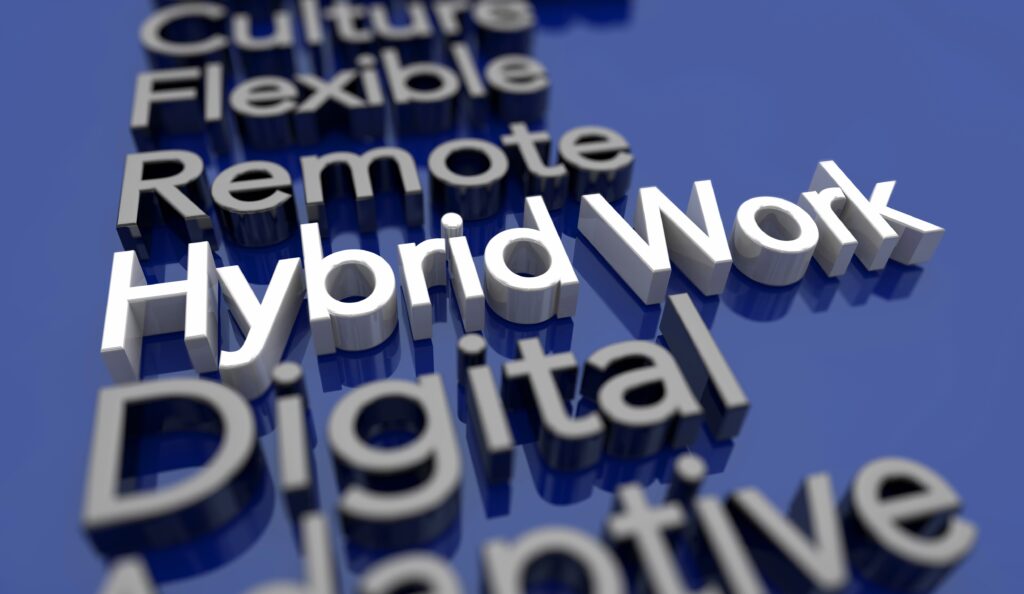The way in which we work has changed drastically over the past number of years. New technologies have aided this change, but we cannot deny that the onset of the Covid-19 pandemic changed our working habits forever. ‘Hybrid Work’ is a phrase that has become part of our daily vocabulary. But what exactly is it? And how can it benefit me?
❓ What is ‘hybrid working’ ❓
At the beginning of 2022, the term ‘hybrid working’ entered the English dictionary. But this event comes as no surprise, as millions of businesses adopted this model throughout the pandemic. Collins English Dictionary (CED) define this phenomonen as “the practise of alternating between different working environments such as at home and in an office”
❗️ Facts and figures ❗️
- More than 80% of UK firms have adapted a hybrid working model in 2020-2022
- All employees are legally allowed to request hybrid work after 26 weeks (half a year) working for a company
- 60% of UK businesses noted an increase in staff wellbeing and productivity while working from home
- 84% of UK employees stated that they intend to hybrid work despite the easing of Covid-19 restrictions

🔍 Hybrid work models 🔎
In the corporate world, there is no such thing as a ‘one size fits all’ approach to hybrid work. Each firm has different issues to take into account before deciding on a suitable plan. There are various differnt models within the world of hybrid working.
5️⃣ The five models 5️⃣
- Fully distributed team: Employees work remotely full-time (no in-office days)
- Default digital: Priority lies with remote working first with an option to utilise a co-working hub (not an office fully dedicated to the company)
- Static hybrid: A mix of office and remote workers within one team (various employees located in different areas)
- Dynamic hybrid: The option of attending the office is available but working from home is equally welcomed (timetable guidance usually provided)
- Sychronised hybrid: All employees operate on the same schedule (e.g. 2 days in office, 3 days from home)

📝 The benefits and challenges 📝
Like everything, as well as the good, there is also the bad. Before adopting a hybrid working model, it is essential that management analyse the pros and cons for their firm.
Benefits ✔️
- Increased flexibility for both employers and employees
- Improved employee engagement
- Higher employee productivity
- Builds resiliance (the ability to adapt and overcome)
Challenges ✖️
- Different time-zones (particularly for Global chains)
- Meetings- some things need to be discussed face to face / time/date co-ordination may be difficult
- Culture building- a lot of company culture is developped face to face in the office (an issue which particualarly effects new employees)
- Concentration- some employees do not have a stable work from home environment / have kids, pets etc. distracting them
💬 Conclusions 💬
In the world of today, hybrid working appears to be the norm. While it is a broad topic, it seems to be the future of our working lives. With various models and adaptations, there is a way to satisfy both employers and employees.
Here at Onedirect, as experts in the communications field, we know that working from home can be difficult for some. Take a look at our helpful tips: Beating Zoom Fatigue & 10 Tips for a Successful Videoconference
